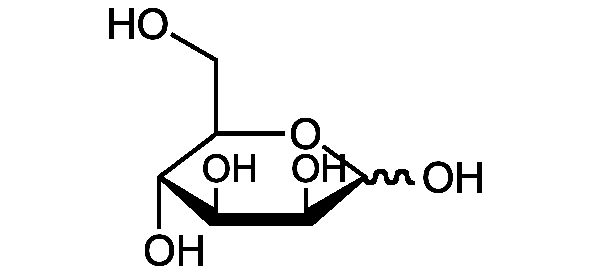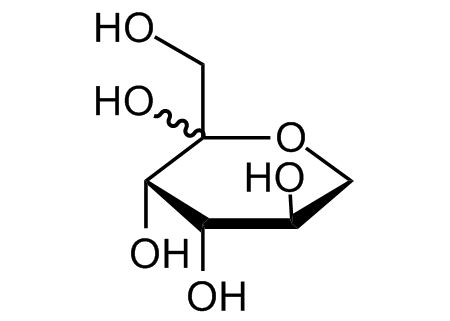
Chemical Structure
D-(+)-Xylose
CDX-X0013
CAS Number58-86-6
Product group Chemicals
Estimated Purity>98%
Molecular Weight150.13
Overview
- SupplierChemodex
- Product NameD-(+)-Xylose
- Delivery Days Customer10
- CAS Number58-86-6
- CertificationResearch Use Only
- Estimated Purity>98%
- Molecular FormulaC5H10O5
- Molecular Weight150.13
- Scientific DescriptionChemical. CAS: 58-86-6. Formula: C5H10O5. MW: 150.13. D-(+)-Xylose is classified as a monosaccharide of the aldopentose type, which means that it contains five carbon atoms and includes an aldehyde functional group. It is derived from hemicellulose, one of the main constituents of biomass. Like most sugars, it can adopt several structures depending on conditions. With its free aldehyde group, it is a reducing sugar. D-(+)-Xylose has been used as one of the component to stimulate microbial activity, for the enhancement of biofilm formation, as a part of biochemical tests for the identification of B. cereus group and for substrate screening characterization. Estimation of D-(+)-Xylose in the urine after oral administration, is useful in diagnosing absorption of carbohydrates and malabsorption of non-pancreatic molecules. D-(+)-Xylose plays a significant role in the biologically conversion of plant biomass to fuels and chemicals. - D-(+)-Xylose is classified as a monosaccharide of the aldopentose type, which means that it contains five carbon atoms and includes an aldehyde functional group. It is derived from hemicellulose, one of the main constituents of biomass. Like most sugars, it can adopt several structures depending on conditions. With its free aldehyde group, it is a reducing sugar. D-(+)-Xylose has been used as one of the component to stimulate microbial activity, for the enhancement of biofilm formation, as a part of biochemical tests for the identification of B. cereus group and for substrate screening characterization. Estimation of D-(+)-Xylose in the urine after oral administration, is useful in diagnosing absorption of carbohydrates and malabsorption of non-pancreatic molecules. D-(+)-Xylose plays a significant role in the biologically conversion of plant biomass to fuels and chemicals.
- SMILESO[C@H]1[C@H](O)COC(O)[C@@H]1O
- Storage InstructionRT
- UNSPSC12352200






![D-(+)-Xylose [58-86-6]](https://www.targetmol.com/group3/M00/02/84/CgoaEWY7MBKEPJHTAAAAAHpx-wg117.png)
